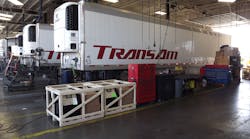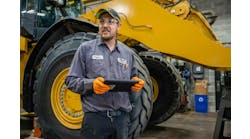If a worker is adversely affected by his or her work due to poor quality job design and working conditions or is injured on the job, there will be an adverse cost to the employer, as well as to the individual worker. Adverse costs can be divided into two categories: direct costs and impacts, and indirect costs and impacts.
Direct costs and impacts are the easiest to see and understand. These include medical expenses for emergency room and doctor visits, medical bills, medicines and rehabilitation; workers compensation; disruption to business activity; overtime to make up for lost productivity; repair or replacement of damaged materials and/or equipment; fines, penalties and legal liabilities
Indirect costs and impacts of an injury are more difficult to identify and are often overlooked. Research has shown this can be up to nearly 40 times the direct costs, depending on the industry and the occupation.
Indirect costs and impacts include administrative and supervisor/manager time dealing with the incident and accident investigation; increased insurance costs; reduced productivity; impact on company morale and customer service; remedial and compliance costs for any equipment safeguards or modifications; safety training and/or development; and creation of new workplace policies, procedures and monitoring.
GOOD HOUSEKEEPING
"Maintenance and repair orders don't stop because a technician is out with a work-related injury," says Karen D. Hamel, the technical education manager for New Pig Corporation. "What's worse is determining that the injury could have been prevented with something as simple as good housekeeping."
New Pig is a supplier of innovative liquid management solutions to industrial, institutional and government facilities in more than 40 countries. www.newpig.com.
Good workplace housekeeping - routine maintenance and upkeep - reduces injuries and accidents, improves morale, reduces fire potential and can even make operations more efficient, officials at W.W. Grainger add. Workplace housekeeping should be an integral part of every company's loss control program.
Grainger is North America's leading broad line supplier of maintenance, repair and operating products. www.grainger.com.
The officials note that the Occupational Safety and Health Administration (OSHA) makes reference to housekeeping in several health and safety standards contained in Title 29 of the Code of Federal Regulations (29 CFR). Per these regulations, all places of employment, passageways, store rooms and service rooms must be kept clean and orderly, and in a sanitary condition.
In order to ensure that proper workplace housekeeping is maintained, a continuous process of housekeeping should be incorporated into all processes, operations and tasks performed in the workplace advise the Grainger officials.
Furthermore, they say each worker needs to understand that workplace housekeeping is an integral part of his/her job and not merely a supplement to work he/she already performs. As workplace housekeeping becomes a standard part of operations, less time and effort are needed to maintain it at an appropriate level.
Workplace housekeeping levels are most easily maintained if they are completed throughout the day as needed, they say. At the end of the shift, all areas should be thoroughly cleaned in preparation for the next day or the following shift.
SLIP-AND-FALL INJURIES
Leaks and spills that aren't cleaned up promptly create slippery floors and track messes throughout the shop, leading to slips, trips and falls - the second leading cause of workplace injuries and lost work time, according to the Bureau of Labor and Statistics, says New Pig's Hamel.
The National Floor Safety Institute finds that slip and fall accidents account for more than one million hospital visits annually. It encourages workers to quickly report safety issues, such as a wet floor or equipment malfunctions, to a manager to prevent accidents and keep employees in the workplace.
Employers that proactively encourage safety have the potential to significantly reduce injuries.
"Identifying slip-and-fall hazards isn't complicated - just follow liquids through the shop and look for areas that are untidy," Hamel says. "Although every shop has unique hazards, fluid dispensing stations, work areas and waste collection sites are common locations for leaks, spills and clutter.
According to the National Floor Safety Institute (NFSI), creating and utilizing a floor safety plan that identifies hazards and includes good housekeeping practices, proper footwear, signage and cleaning materials can help reduce slip and fall injuries by up to 90 percent, she notes.
FLOOR SAFETY PLAN
Like most changes, it takes some time and effort for good housekeeping and safety changes to become habits, says Hamel, who recommends the following elements to help a floor safety plan succeed:
- Cleanup supplies and barriers. "Whether it is a dust pan and broom to sweep up metal shavings and dust, or absorbents to clean up spills near a waste oil tank, if clean up supplies are not readily available, people will not use them," she says. "Few people will take the time to go to the other end of the building to get the supplies that they need.
"Making them readily available where spills or messes happen encourages faster response.
"Likewise, having traffic cones or other barrier devices readily available can help divert traffic or people away from a hazardous area until it can be cleaned up or the hazard corrected."
- Signage. "Signs help to reinforce safety, identify hazards and help people know where to find things," says Hamel.
Signs can be as simple as a notice on the door that reminds every one of the need for safety glasses and proper footwear, or a sign on the wall that says "spill kit" and has an arrow pointing to its location.
- Cleaning chemicals. It is not uncommon for the wrong cleaning chemical to cause slippery floor problems, Hamel observes. Check with cleaning chemical suppliers to determine how much of a cleaning chemical should be used when cleaning a floor, and how often cleaning is recommended.
"Two very common problems are using too much of a cleaning chemical - more isn't always better, or not using it often enough."
- Footwear. "Consider footwear as a tool," advises Hamel. "Like an impact wrench or a pad sander, it needs to be taken care of, and it needs to be replaced from time to time.
"Unfortunately, the lifespan on a pair of work boots is probably a lot shorter than other tools. Establish a change-out policy for footwear that encourages replacement at proper intervals.
INCENTIVE PROGRAMS
In most cases, on-the-job accidents and the accompanying loss of productivity and efficiency can be avoided by establishing manager/employee safety committees, instituting regular training programs and inspections, and creating safety incentive programs. Such programs have become a commonplace approach used by all types of vehicle maintenance operations to improve safety and reduce workers' compensation claims and other worker injury-related costs.
For these types of programs to be effective, they must be properly developed, implemented and maintained.
Officials at Grainger, offer the following advice for crafting an effective safety incentive program.
1. Define objectives.
First, concentrate attention where incidents are occurring, stress the officials. Then, gather the appropriate personnel and analyze your company's incident/injury rates and subsequent lost-work times.
"This will help identify the areas that need to be focused on and give the background necessary to set reasonable goals," they note.
"Involve everyone, especially management. Management's involvement and support is vital to set the tone for employees."
Furthermore, they say employees should be encouraged to become involved by submitting safety ideas and be rewarded for pointing out safety hazards.
2. Choose a format.
Get to know the needs of supervisors and employees, then select activities for the safety incentive program that will yield results.
One way to get information from workers is to take an inventory or a survey of opinions, the Grainger officials say. A safety suggestion box is another tool to use to solicit ideas.
Employees need to understand why the program is being implemented. The program's goals, rules, how it works and how progress is measured must be clearly defined and easily understood. The awards/rewards should be tailored to fit the workforce.
3. Maintain interest.
The supervisor plays an important role in creating and maintaining interest in a safety awareness program, Grainger officials say. A supervisor is responsible for translating management's policies into action and for promoting safety activities directly among the employees.
It is the responsibility of management that the safety director and supervisors receive adequate safety training. Essentially, supervisors are directly accountable for the safety of their employees.
The supervisor's attitude toward safety is a significant factor in the success not only of specific promotional activities, but of the entire safety program as well.
4. Create safety committees.
Safety committees play a key role in any safety program as they can help share the responsibilities of implementing and monitoring the program, plus maintain interest in safety and health, all of which helps to reduce accidents.
Safety committee membership should be rotated periodically, suggest the Grainger officials. "Rotation allows for new viewpoints while it increases the number of employees to look at operations through the eyes of safety."




